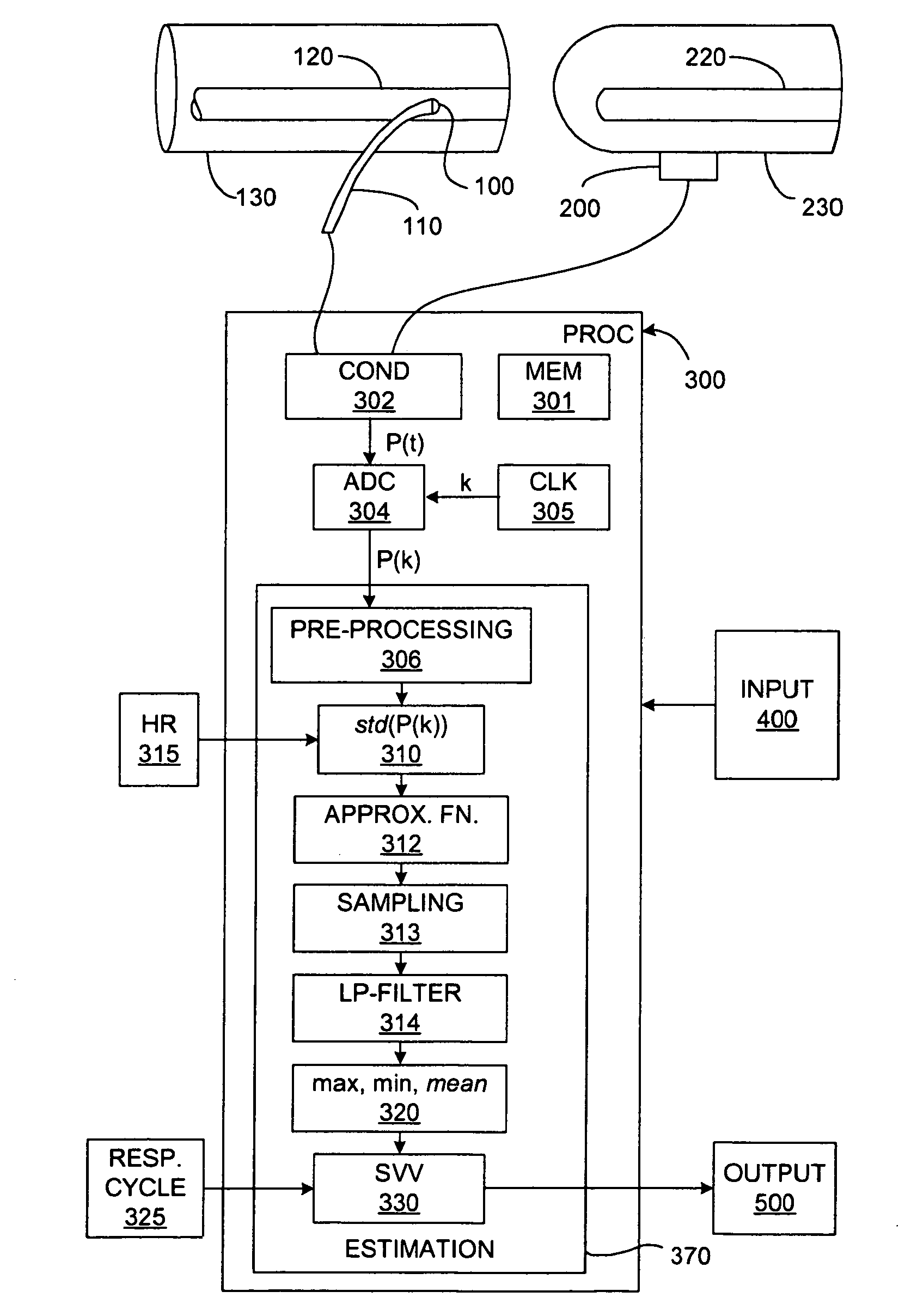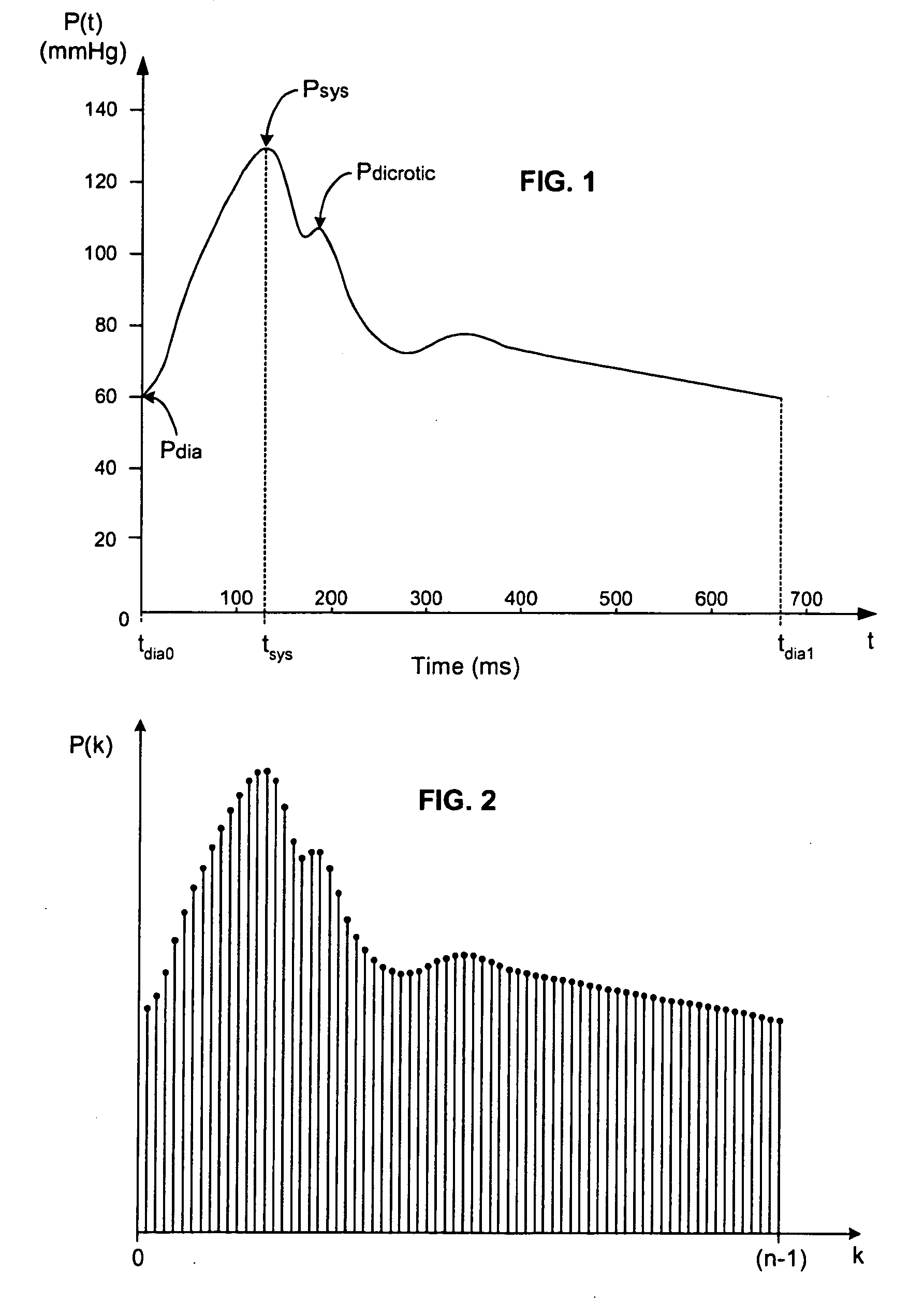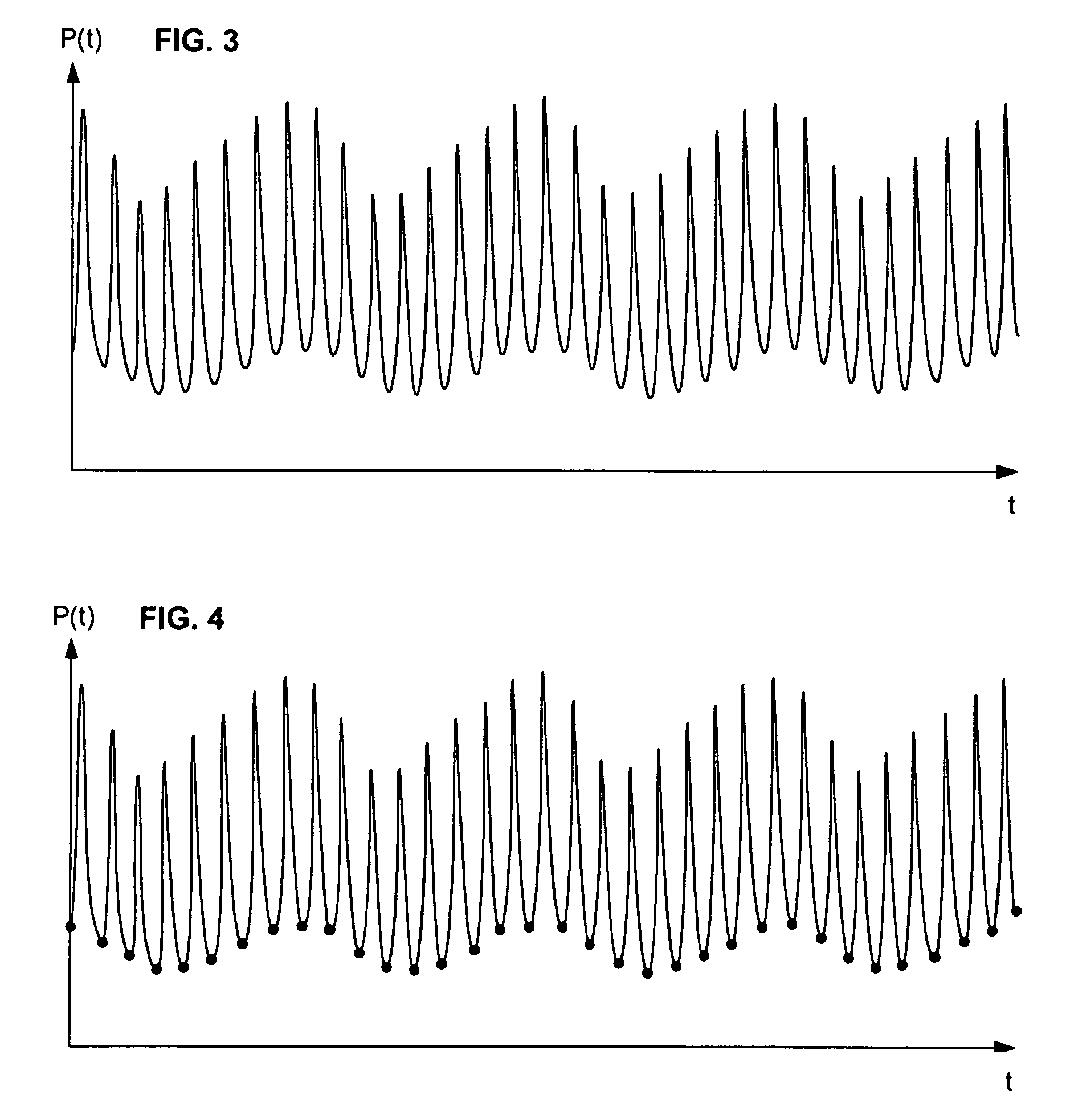Real-time measurement of ventricular stroke volume variations by continuous arterial pulse contour analysis
a pulse contour analysis and real-time measurement technology, applied in the field of cardiac monitoring, can solve the problems of affecting the value, requiring a certain type of equipment, and few hospitals without a monitor
- Summary
- Abstract
- Description
- Claims
- Application Information
AI Technical Summary
Benefits of technology
Problems solved by technology
Method used
Image
Examples
Embodiment Construction
Introduction
[0047]In broadest terms, the invention involves the beat-to-beat of stroke volume variation SVV as a function of the standard deviation of the blood pressure waveform over a plurality of cardiac cycles. Of course, the invention may be used to determine any other cardiac parameter that can be derived from SVV.
[0048]The invention may be used to advantage with any type of subject, whether human or animal. Because it is anticipated that the most common use of the invention will be on humans in a diagnostic setting, the invention is described below primarily in use with a “patient.” This is by way of example only, however—it is intended that the term “patient” should encompass all subjects, both human and animal, regardless of setting.
[0049]Because of its clinical significance, it is anticipated that most implementations of the invention will generate SVV estimates based on measurements of systemic arterial blood pressure. It would also be possible to use measurements of bloo...
PUM
 Login to View More
Login to View More Abstract
Description
Claims
Application Information
 Login to View More
Login to View More - R&D
- Intellectual Property
- Life Sciences
- Materials
- Tech Scout
- Unparalleled Data Quality
- Higher Quality Content
- 60% Fewer Hallucinations
Browse by: Latest US Patents, China's latest patents, Technical Efficacy Thesaurus, Application Domain, Technology Topic, Popular Technical Reports.
© 2025 PatSnap. All rights reserved.Legal|Privacy policy|Modern Slavery Act Transparency Statement|Sitemap|About US| Contact US: help@patsnap.com



